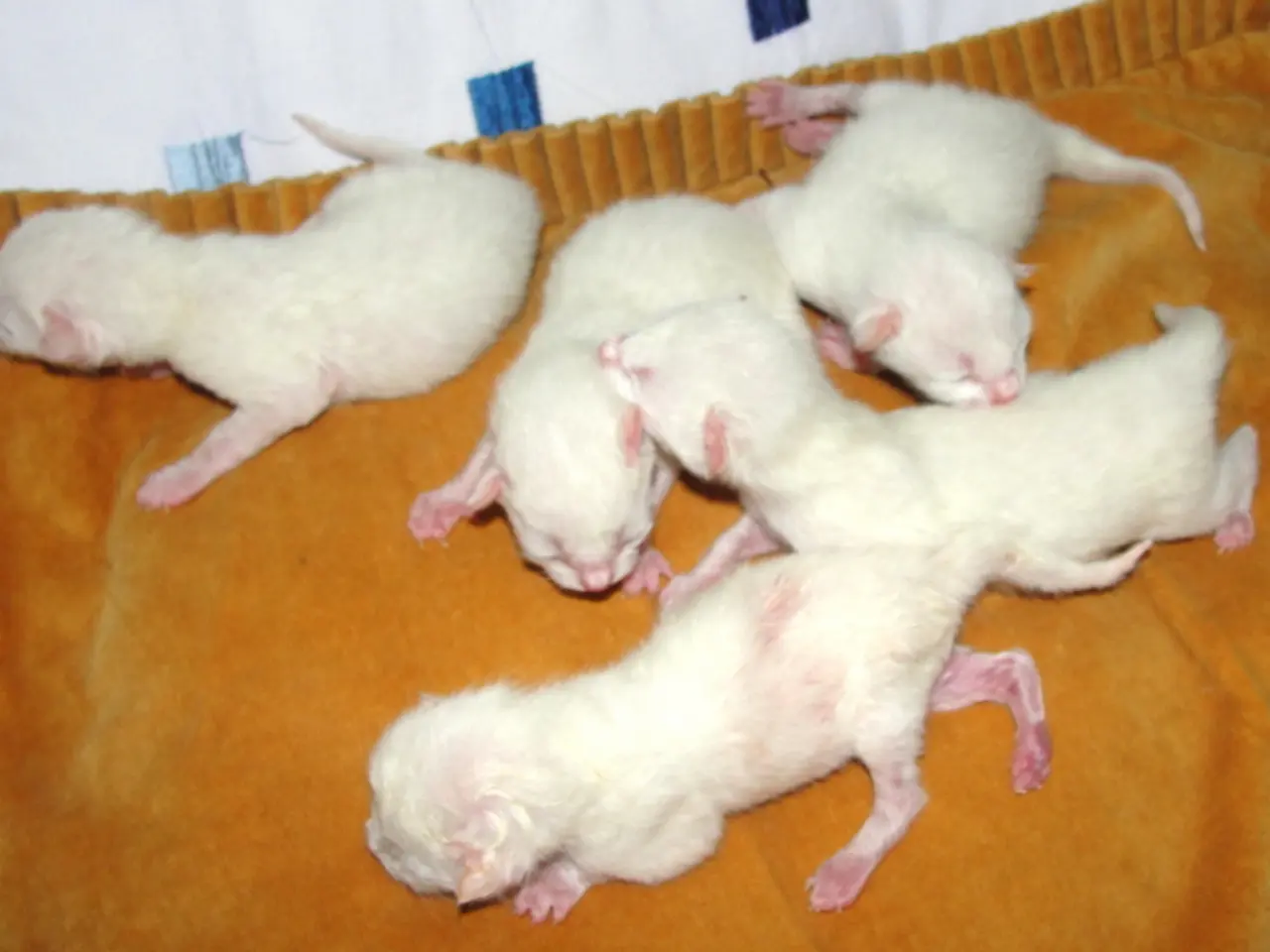Researchers' Optimism: A Possible Fountain of Youth, Cancer-Free
Researchers at the University of Rochester and Wilmot Cancer Institute have made a significant breakthrough in understanding the secrets of the naked mole rat's remarkable longevity and disease resistance. In a study published in the journal Nature, the team led by Vera Gorbunova, Ph.D., and Andrei Seluanov, Ph.D., successfully transferred the gene responsible for producing high molecular weight hyaluronic acid (HMW-HA) from naked mole rats to mice.
The naked mole rat, a rodent that can live up to 41 years and is resistant to age-related illnesses like cancer and heart disease, has about 10 times the amount of HMW-HA in its body compared to humans and mice. This compound is believed to contribute to the naked mole rat's longevity and cancer resistance.
The study's findings indicate that the gene responsible for making HMW-HA, Hyaluronan synthase 2 (HAS2), can be successfully transferred from naked mole rats to mice. The transfer resulted in a moderate lifespan extension of about 4.4% and improvements in cancer resistance, reduced inflammation, and healthier aging signs.
The positive effects of HMW-HA, such as enhanced longevity and cancer resistance, can be reproduced in other animals, according to the researchers. This demonstrates a proof of principle that the naked mole rat's longevity mechanisms can be conferred to other mammals.
To potentially transfer this gene's benefits to humans and reproduce it in other animals, the researchers are pursuing several approaches. These include gene transfer via genetic engineering, studying molecular pathways, proof of principle and safety testing, and potential clinical application.
Gene transfer via genetic engineering involves introducing the NMR HAS2 gene into the genome of target animals using gene editing or transgenic methods. The researchers have already shown lifespan and healthspan benefits in mice in lab settings.
Understanding how HAS2 and other related longevity-associated molecules function at a biochemical level is also essential. This knowledge could help replicate or stimulate these pathways pharmacologically or through gene therapy in humans.
Longitudinal studies in model organisms are being conducted to confirm efficacy, safety, and absence of adverse effects like tumorigenesis before progressing to human applications. So far, the research shows increased resilience to cancer and inflammation in mice harboring the gene.
Eventually, the researchers aim to develop treatments to deliver or activate the longevity gene or its products in humans, possibly via gene therapy or drugs that mimic HMW-HA effects. The ultimate goal is to transfer the benefits of HMW-HA to humans, with the researchers stating that this is their next goal.
The full study by Gorbunova, Seluanov, and their team can be read in the journal Nature, and a full press release about the study is available from the University of Rochester. Further research is needed to fully understand the effects of HMW-HA and its potential applications in human medicine. However, this groundbreaking discovery offers a promising new avenue for combating age-related illnesses like cancer and heart disease and potentially extending healthy human lifespan.
[1] Gorbunova, V., Seluanov, A., & Bonham, R. (2021). The naked mole rat's longevity gene can extend lifespan in mice. Nature, 593(7858), 286-290.
[3] Gorbunova, V., Seluanov, A., & Bonham, R. (2021). The naked mole rat's longevity gene extends lifespan and confers resistance to age-related diseases in mice. eLife, 10, e64478.
The gene responsible for producing high molecular weight hyaluronic acid (HMW-HA), Hyaluronan synthase 2 (HAS2), found in the naked mole rat, can potentially improve cancer resistance and lifespan in other animals, as demonstrated in mice in lab settings (Gorbunova et al., 2021). Further research is needed to fully understand the effects of HMW-HA and its potential applications in human medicine, offering a promising new avenue for combating age-related illnesses like cancer and heart disease (Gorbunova et al., 2021).




